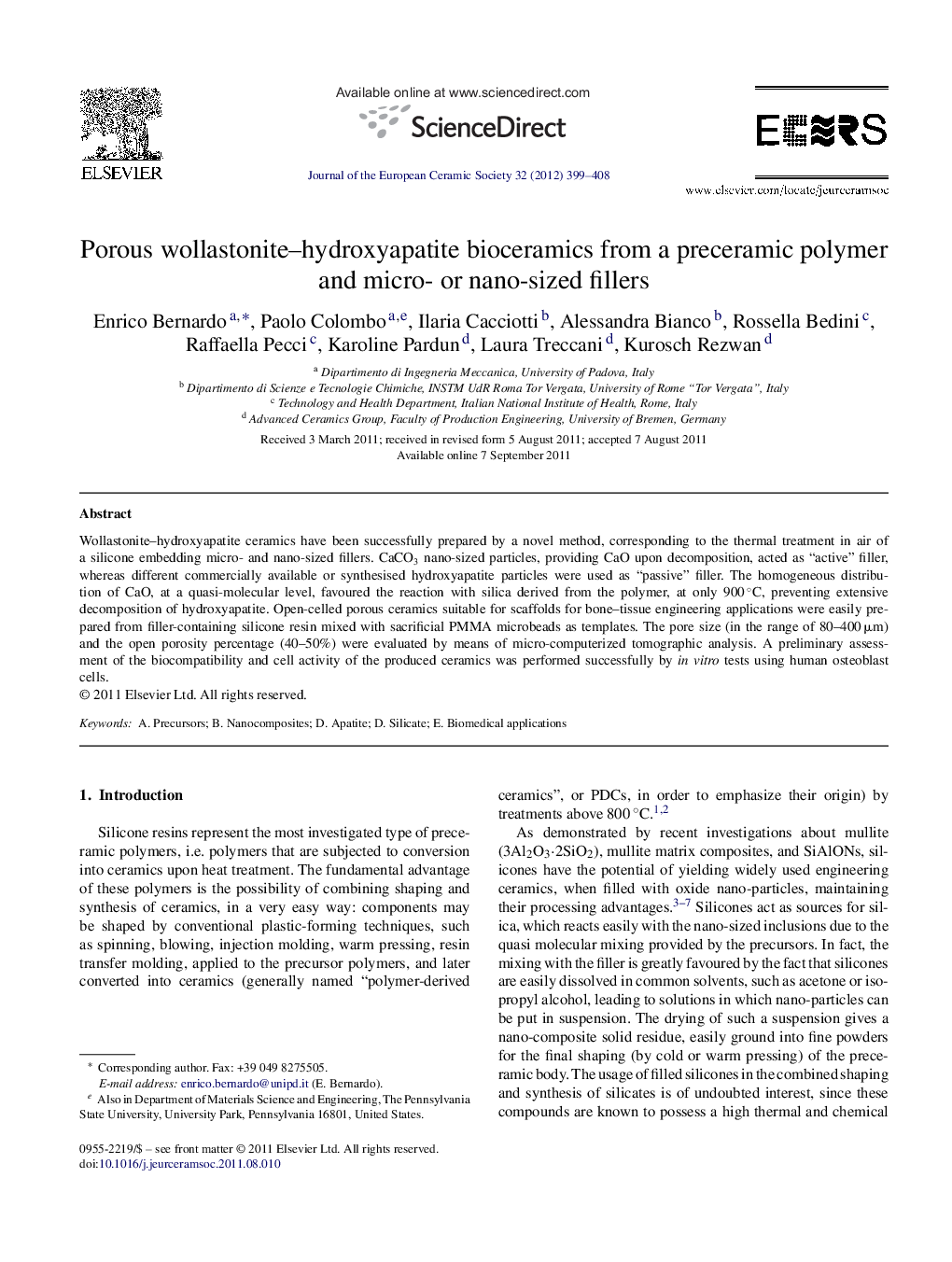| Article ID | Journal | Published Year | Pages | File Type |
|---|---|---|---|---|
| 1474828 | Journal of the European Ceramic Society | 2012 | 10 Pages |
Wollastonite–hydroxyapatite ceramics have been successfully prepared by a novel method, corresponding to the thermal treatment in air of a silicone embedding micro- and nano-sized fillers. CaCO3 nano-sized particles, providing CaO upon decomposition, acted as “active” filler, whereas different commercially available or synthesised hydroxyapatite particles were used as “passive” filler. The homogeneous distribution of CaO, at a quasi-molecular level, favoured the reaction with silica derived from the polymer, at only 900 °C, preventing extensive decomposition of hydroxyapatite. Open-celled porous ceramics suitable for scaffolds for bone–tissue engineering applications were easily prepared from filler-containing silicone resin mixed with sacrificial PMMA microbeads as templates. The pore size (in the range of 80–400 μm) and the open porosity percentage (40–50%) were evaluated by means of micro-computerized tomographic analysis. A preliminary assessment of the biocompatibility and cell activity of the produced ceramics was performed successfully by in vitro tests using human osteoblast cells.
